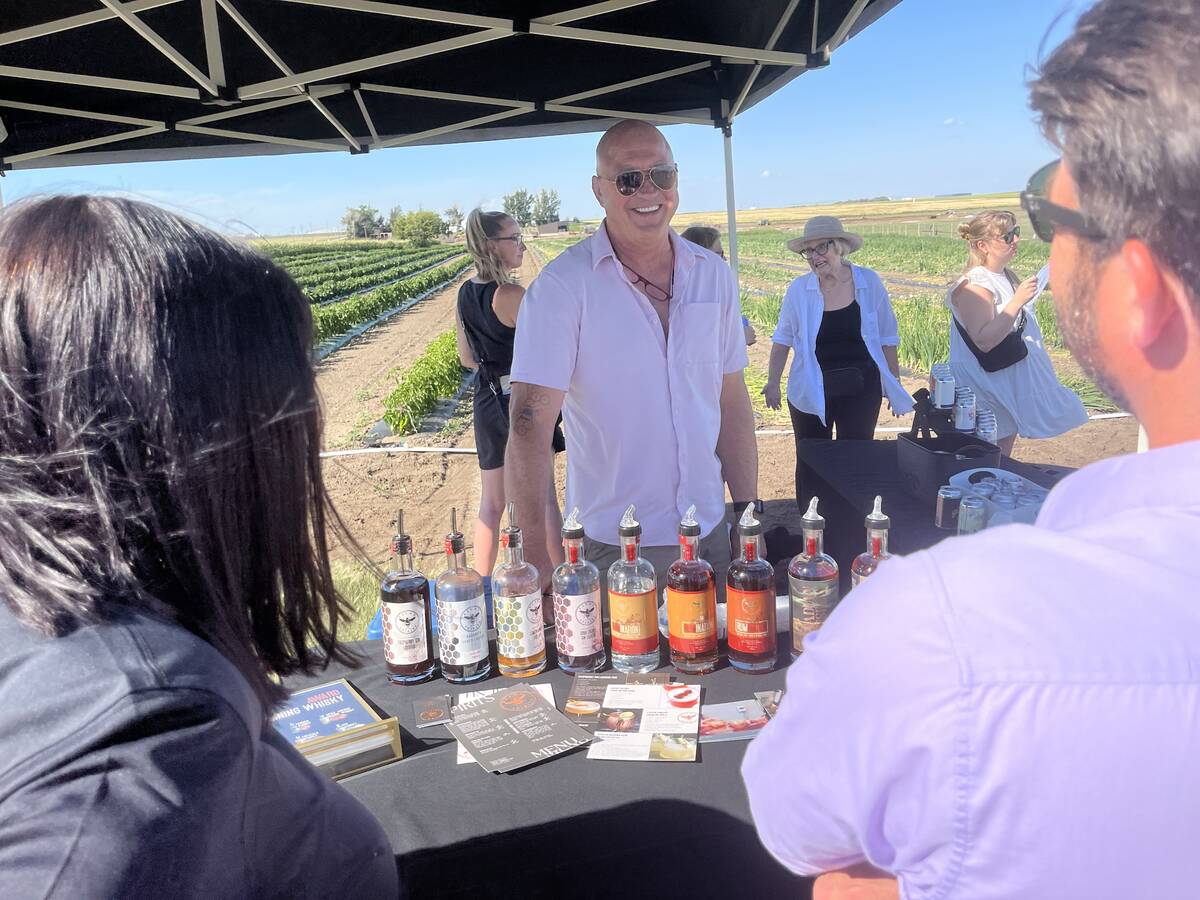WOKING, Alta. – In a basement corner between the freezer, the washer and dryer and the furnace, the history of Alberta farm organizations is being preserved.
With little more than an old computer, a scanner and a desire to see history maintained, Eileen Nagel has spent the last 10 years sifting through thousands of newspaper clippings, photos, minute books, binders, videos, reel to reel tapes and scraps of paper trying to piece together the history of Alberta farm organizations.
Already Nagel has organized much of the information on a collection of three CDs. She estimates it will be another 10 years and four more CDs before she’s finished.
Read Also

From farmer to award-winning distiller
Pivot Spirits showcases transition from farmer to distiller with provincial award-winning results in Alberta for Lars Hirch
“I’m hoping that for the next 30 years we’re going to be healthy because if we get sick, our kids will kill us,” said Nagel, whose northern Alberta farm home basement has become the final resting stop for every piece of farm organization memorabilia she could track down.
For 30 years Nagel travelled with her husband, Hartmann, to meetings of Unifarm, which was then the provincial farm organization.
While never an active participant in the discussions, she sat at the back of the meeting hall and listened to the debate, or visited with delegates at the banquet table and learned to appreciate the hard work and the important role farm groups played in the history of the province.
When Unifarm folded in 1997 and Wild Rose Agricultural Producers was formed, Nagel was asked if she could help deal with some of the bits and pieces and the few artifacts left over from Unifarm.
There had been a suggestion that the pieces be sent to the western heritage museum in Cochrane, Alta., that has since been closed. Nagel was adamant that was not the right place for the artifacts.
“I said ,’no, I think they deserve much more than being put in the back room of a museum. We need something of our own’, ” she said.
On the drive home from Edmonton she began to wonder what happened to the rest of the historical information from the farm organizations before Unifarm, like the United Farmers of Alberta, the United Farm Women of Alberta and the United Farmers of Canada, Alberta section.
If the history of farm organizations was to be preserved in Alberta, it was up to Nagel.
In the first four months of the project, she spent more than 900 minutes each month phoning anyone who might have a lead on information. The documents began flowing in.
“I got such treasures,” said Nagel, who often spends 14 hours a day in the basement organizing the information.
Families were happy to give her the photos, plaques and newspaper clippings that had once meant so much to their grandparents or great-grandparents, but now meant little to the family.
“These are awesome treasures and nobody said they want them back. Everybody was happy to give me this stuff.”
In the box of paraphernalia from Unifarm was a large black and white photo no one could identify. Nagel knew it must be important and thought it might be James Bower, the first president of the United Farmers of Alberta. On one trip to Red Deer she met Bower’s 97-year-old son, who identified the photo as his father and said he, too, was at the founding convention, when he was seven.
She also has three delegate photos of the United Farmers of Alberta from 1920 to 1922 in Calgary that are longer than her arm.
“Here I am with these wonderful, wonderful pictures,” said Nagel, who uses an old four-drawer dresser to hold many of the photos.
On the dresser is Unifarm’s portable lectern and loudspeaker that was hauled into hundreds of meetings. Beside the dresser are tall shelves loaded with cookbooks, binders, hats, plaques, pins, pens and farmgate signs.
As the information began pouring in, Nagel sorted it by year and region.
If an old minute book was sent from meetings, Nagel read it, copied the highlights and interesting stories and added that information to the binders.
Once the binders were organized she scanned every page from all 55 binders into the computer to ensure the history is kept together and the stories are available to everyone.
With each story, her appreciation grew for the work of early pioneers.
From a Feb. 13, 1940, United Farm Women of Alberta Westlock area meeting, she learned the group of ladies were joining other groups across the province to establish a restroom in their town where mothers could nurse their children, rest, go to the bathroom or have a cup of tea. The women of the farm organization would work together to make mattress covers from old flour sacks and cobble together supplies to furnish the rest area.
She also learned the United Farm Women of Alberta put together its first cookbook in 1928 with members’ favourite recipes and sold it for 65 cents. Wild Rose Agricultural Producers has just printed the eighth edition of a cookbook compiled with recipes from farm women.
A list of supplemental resolutions to the United Farmers of Alberta meeting in 1934 shows farm concerns were not much different then. There were resolutions on a wheat marketing board, the price of bread and export grades of pork products.
Other resolutions called for all schoolchildren to learn the national anthem and require cars to dim their headlights when passing other vehicles.
“What this province is about is the policies that were implemented at these meetings,” said Nagel.
“These were the foundation layers of this province.”
From the beginning Nagel wanted to capture and record every detail. It was not the few board members who should be recognized, but every single person who volunteered on a committee and was a member of the organizations.
“It took everyone to make a successful farm organization.”
Included on the discs are lists of delegate names, membership lists and photographs.
“I wanted to save every single thing I could get my hands on, however trivial it was.”
The three discs are divided into eras.
The first CD contains information on the first 45 years from 1905 to 1949. The second CD is of the past 36 years from 1969-2005 with information about Unifarm and Wild Rose Agricultural Producers. The third CD is a pictorial history of the Women of Unifarm from 1969-2000.
“There are a million things in here that are interesting.”
Nagel has just started organizing the years from 1949-69. By the time she finishes her project, she hopes more people will have an appreciation of Alberta farm organizations.
“I’m hoping to leave the flavour of what farm organizations were like.”














